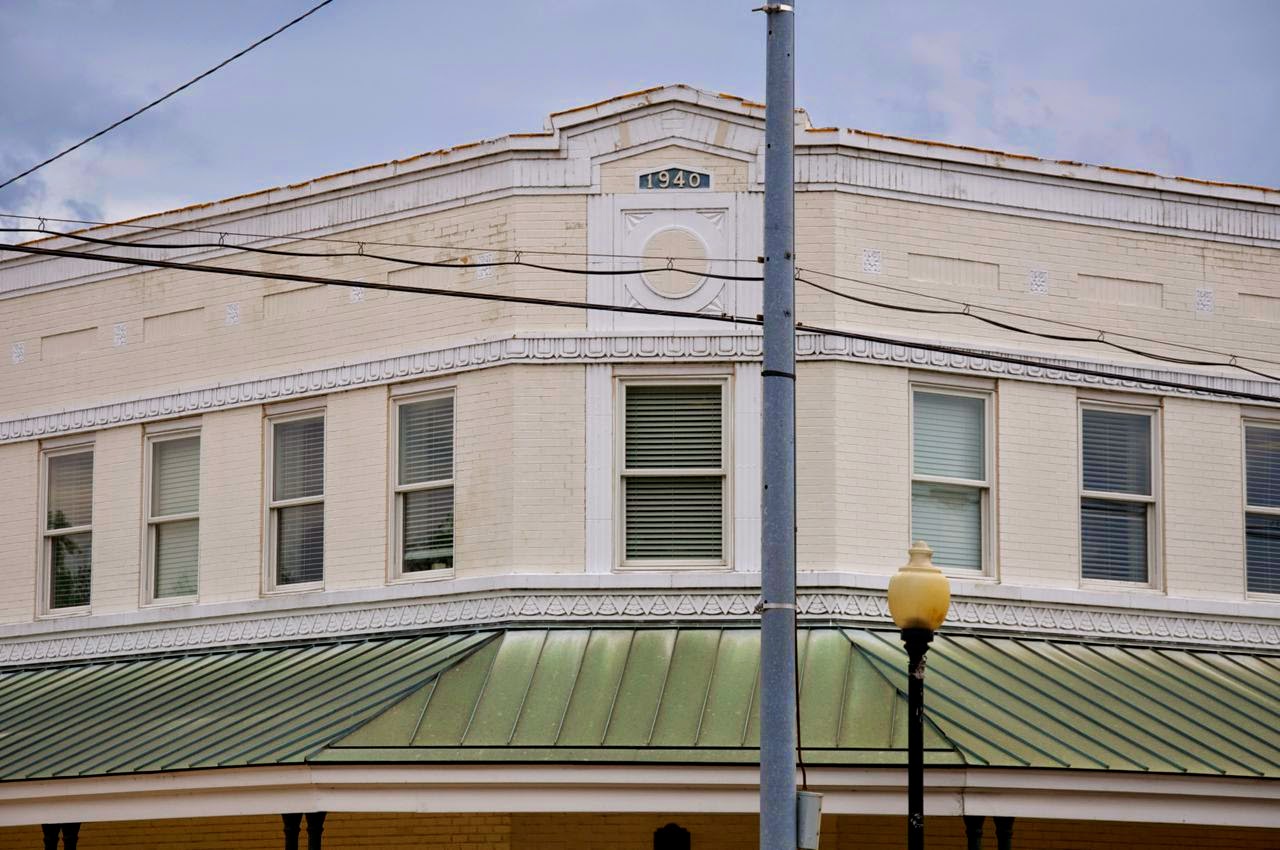Oak Grove is a small African American community about 2 miles from Rosston, in Nevada County, Arkansas. It has quite the history of significance in education for African Americans in Arkansas.
Few, if any, agencies of the New Deal directly affected as many African Americans during the Great Depression as did the WPA. (Gatewood, 2000, p. 126)
Arkansas benefitted, as did African American communities across the United States, with the appointment of Alfred Edgar Smith from Hot Springs, Arkansas as a member of President Roosevelt's so-called "black cabinet" (Gatewood). Mr. Smith served as assistant and advisor to Harry Hopkins, with a particular focus to advise about the needs and concerns of African Americans in the deep South. Being from Hot Springs gave Mr. Smith in depth knowledge of the needs of his home state, and a number of educational facilities were constructed across Arkansas--many which still stand and are in use today.

In addition to the large gymnasium, the cafeteria/home economics building remains. Both were constructed with funds and labor from the Works Progress Administration. I would not have known the purpose of the home ec building had not a couple who lived across the street come out to visit with me. While she was not from the community, he had lived there his entire--though young--life and gone to school in the buildings. One building from the three-building complex constructed with WPA funds has been demolished.
Architectural classification of the concrete foundation, wood/weatherboard walls and asphalt roof was "Late 19th/Early 20th Century American Movements/Craftsman (Story, 1990).
...tall, single story, wood frame gymnasium...designed in the broad, massive style common to the Works Progress Administration (WPA) commissions of this type and size...locally significant example of a simple but handsomely balanced design which reveals the skill of the Works Progress Administration workers. (Story, 1990)
Two side sheds flanked the court area, and a stage was at the opposite end from the ticket booth in the entrance. In 1990, the building and its interior were almost completely intact, and contained the original bleachers, columns, interior strip sheathing, stairwells, and ticket window, all "preserved and in good condition" (Story).
Sadly, that is no longer the case. The roof collapsed at some point since 1990, and the interior is now significantly damaged. Additionally, people have stolen items and artifacts from the building according to the couple across the street. He stated the building had a historic plaque, and one day some folks from Texas stopped and removed it from the wall as a "souvenir."
A high school building was erected in 1925 with help from the Julius Rosenwald fund. The principal from 1932-1935, Mr. Vines, received a grant to use WPA labor to construct the home economics building. When the Rosenwald school burned shortly after, Mr. Vines "persuaded the WPA to build a new administration/classroom building instead, and by 1935, to also building the home economics building (Story).
In 1935, L. W. Johnson became principal, and expanded the curriculum to include 12 grades.
It was at this time also that Johnson himself became aware that there was no gymnasium building locally which was available to blacks...Once again, with the aid of WPA labor, Johnson worked with county superintendent Basil Munn to obtain a new gymnasium for the students of the Oak Grove School District.
The building which resulted was not only a large and impressive structure; at the time, it was only the second gymnasium for blacks in the state of Arkansas and it was the largest gymnasium in the state...the Wortham Gymnasium...stood then as it does now for the endurance, hard work, and vision of the blacks in this area who dreamed on an independent opportunity to educate their own. (Story)
A professional basketball team--archrivals of the Harlem Globetrotters--played the A. M. & N. team from Pine Bluff. The New York Renaissance Big Five, or the RENS as they were known, played the team in the Oak Grove gymnasium rather than in the college gym in Pine Bluff (Gatewood).
Construction of the gym began in 1938 and was completed by 1939. It was named in honor of Roger Q. Wortham, Nevada County Judge from 1929-1935, and a supporter of Oak Grove's educational program (Smith & Joshua, 2003). While it was second in the state, it was the first high school gymnasium for black students in Arkansas.
The WPA granted $8,954 for the gym construction and the school district provided $3,680. Local resident C. C. Bazzelle provided a portion of the lumber for the gym from his stand of "school trees" (Gatewood, p. 128).
The Oak Grove Civic League received a $10,000 preservation grant in 1998 to restore the gym. It is unknown as to why the project was discontinued, and the League has been discontinued since at least the early part of the 2000s.
Sources: Gatewood, W. B. (2000). Wortham Gymnasium. In M. K. Christ and C. H. Slater (eds)
Sentinels of History: Reflections on Arkansas Properties on the National Register of Historic Places. Fayetteville, AR: University of Arkansas Press.
Smith, C. C., & Joshua, L. W. (2003).
Educating the masses: The unfolding history of black school administrators in Arkansas 1900-2000. Fayetteville, AR: University of Arkansas Press.
Story, K. (1990). Nomination form for Wortham Gymnasium for the National Register of Historic Places. Retrieved from Arkansas Historic Preservation Project.












































